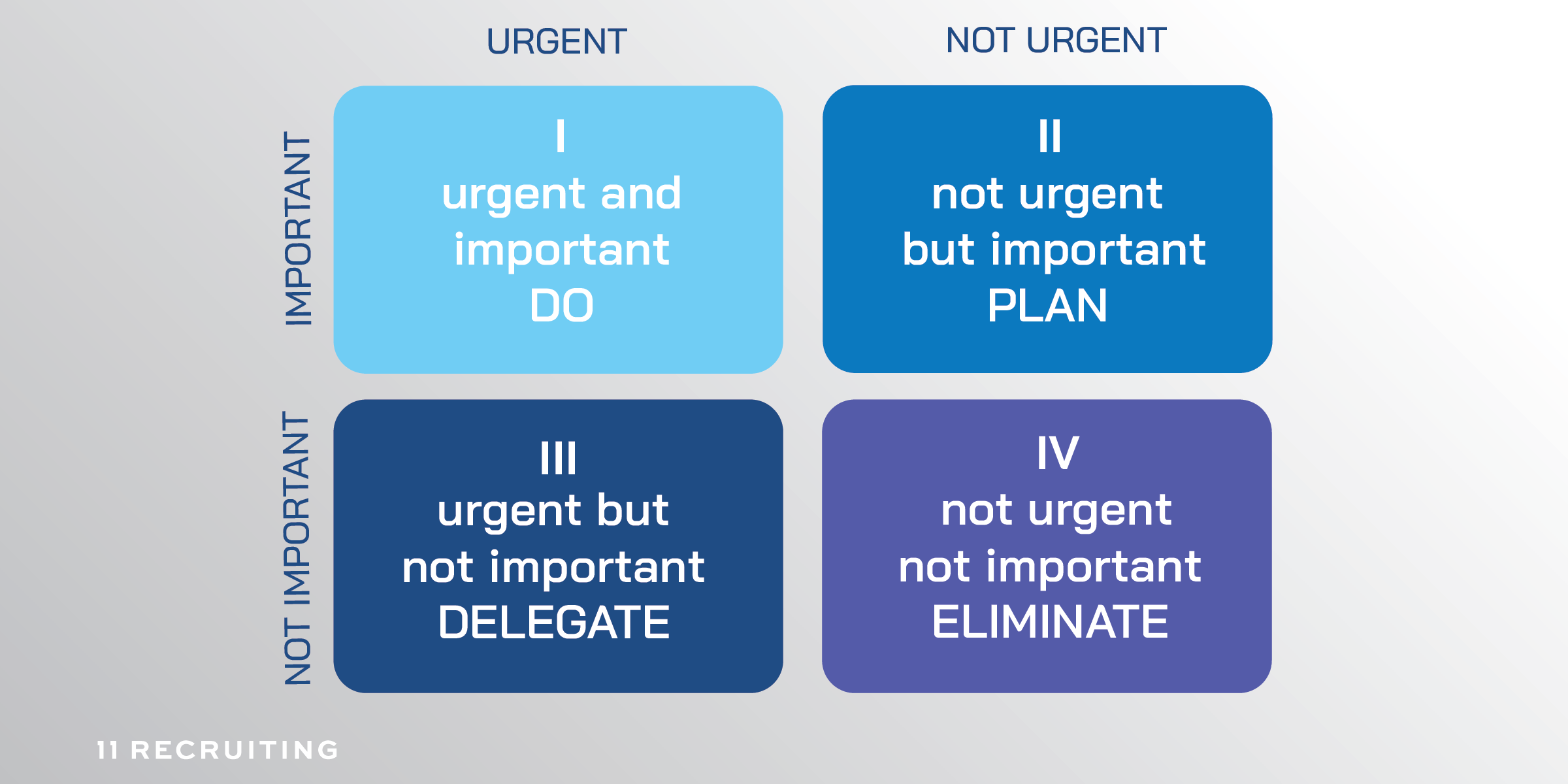
“Lack of direction, not lack of time, is the problem. We all have twenty-four hour days.” – Zig Ziglar
Everyone tends to do things at their pace depending on their perception of importance or urgency. Often, it’s regardless of whether these activities bring you closer to your goals or not. What if there is a tried and tested method that can help you plan and prioritize your projects?
This is where the time management matrix comes in. The matrix consists of four quadrants that we will discuss in detail. We will also discuss proper time management, tools you can use to track your time, and the benefits of managing your time well.
Time Management Matrix
Steven Covey, the author of ‘7 Habits of Highly Effective People’, is the originator of the time management matrix. The matrix aims at helping you manage your time better by categorizing tasks according to their importance and urgency. The time management matrix eliminates all unnecessary activities (time wasters) to have more time for crucial things.
The matrix has 4 quadrants of time management that we’ll discuss in detail.

Q1 | important and urgent: The first quadrant consists of projects that are not only critical, but also urgent. You should put more focus on tasks within this quadrant because it entails those things that matter.
Things that matter are those you must fulfill, such as going to work, attending classes, or shopping for groceries. If you’re a last-minute person, this quadrant will see you run into an ever endless cycle of having important but urgent projects.
The first quadrant is better described as a crises management category. This is where your almost due school project falls. A last-minute rush with important projects is avoidable if you progressively handle them before the actual deadlines.
Q2 | important but not urgent: if you spend most of your time handling essential things that aren’t urgent, you will not have to get into the crisis management mode. The second quadrant involves planning, prevention, and improvement.
To succeed with projects in the second quadrant, you need to do something each day to help you get to the final result. For example, if you want to pass your exams, you need to revise from the beginning of the semester instead of the last-minute reading when exams are near. Another example is if you want to lose weight, you need to continuously eat healthily and exercise before it gets to a point where you’re obese.
Q3| not important but urgent: Sadly, most of us cannot differentiate between urgency and importance. You may spend most of your time in this quadrant, which wastes time you’d have used on your important tasks.
An example is when you start responding to emails or messages from friends and relatives while you should be working.
Q4| not important and not urgent: This category includes time-wasting activities that can see you mess up your opportunities. In the long run, you may end up losing essential things like a job or expulsion from school.
For example, watching movies while studying is a time-waster. Scrolling social media and catching up with friends while working is also not important.
Benefits of Time Management
Time management skills are crucial to establishing a personal and work-life balance. Effective time planning will also help you avoid getting stressed when deadlines are near. Here are some of the benefits of proper time management for employees, managers, and business owners.
- Better productivity: Once you understand the art of managing your time, you will perform better in your area of specialization. You will notice that you have enough time to handle all important tasks and deliver outstanding results.
- Improved work-life balance: Proper time management helps you plan your activities. You can already estimate when you will complete a project by doing this. You can then reserve time for personal things like grocery shopping. You won’t experience burnout if you can balance work and personal life.
- Better focus: Time management means slotting different activities for different times. Concentrating on one task at a time gives a better outcome than juggling tasks.
- Develops self-discipline: Sticking to the tasks you set out each day will help you acquire self-discipline. Over time, you’ll find that you’re able to adhere to deadlines without having to rush at the last minute.
- Helps you build better relationships: Most workplace conflicts arise when some employees don’t meet their targets which derail the efforts of other hardworking employees. If all workers can put in some effort to get things done at the right time, they will have better relationships.
Frequently Asked Questions
What is the purpose of Steve Covey’s time management matrix?
The purpose of Steve Covey’s time management matrix is to get rid of time-wasting activities. When irrelevant tasks are out of the way, you can focus on important tasks. The idea behind the matrix is to help you manage your time well while avoiding distractions.
What is the first step to effective time management?
The first step to effective time management is understanding what tasks you need to handle and how much time you need to allocate each project. Different projects require different timeframes depending on their nature. You need to evaluate the projects objectively to determine those that need more time than others.
What are the three methods of time management?
The three main time management methods are proper planning, prioritizing, and performing the tasks at hand. Planning helps you adhere to deadlines so that you can avoid the last-minute rush. Prioritizing categorizes tasks in order of their importance and urgency. Then finally, you get into action to achieve desirable results.
How to Use the Time Management Matrix
Now that we’ve learned what the Covey time management matrix means, how do we apply it in our day-to-day lives? Here is how.
1. Write Down all the Tasks
The first thing you do is note down all the things you need to do in a month. Here, you don’t have to classify them according to importance or urgency but ad hoc. By writing down all your projects, you will know how to allocate time for each, depending on the complexity.
2. Give Timeframes
Now that you have all tasks written down, it’s time to assign deadlines. You already know those things when you need to complete, for example, assignments or reports at work. It’s always advisable to give yourself more time than you’d need so that you aren’t under pressure.
3. Evaluate your Projects Based on Relevance and Urgency
After understanding the 4 quadrants of time management, you can now gauge your projects to determine the important ones and the urgent ones. Categorize all the projects based on the quadrants we’ve discussed above.
4. Handle the Important Ones First
You need to work on the important but urgent tasks first because they can turn into a crisis if not well managed. Next, you need to start working on important but not critical tasks because they can pressure you when time is limited if not handled.
5. Get Rid of Time Wasters
To identify time wasters, you need to have an objective mind. Time-wasting projects are not necessary, and neither are they urgent. These are the kind of activities you need to eliminate to have enough time to handle what matters most.
Time management is crucial if you want to achieve your goals within your set time. Many online tools such as the Flextime Manager and Pomodoro can help you track your time to know what activities take up most of your time.
Do you want to know how to improve your time management skills at work? Look at other related posts on our blog.
https://elevenrecruiting.com/i-dont-want-to-work/
https://elevenrecruiting.com/professional-crisis-management/

